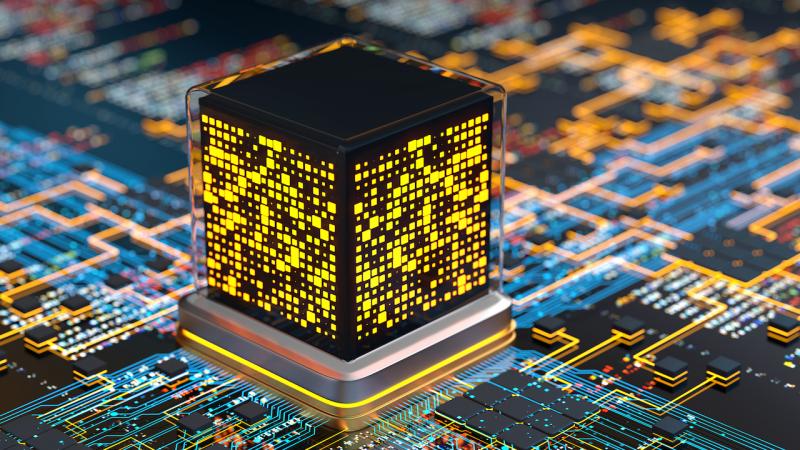Classical computing and quantum computing are different information processing paradigms, each with capabilities and characteristics. The primary difference resides in the fundamental building blocks and information storage and processing methods. Bits, which denote either a 0 or a 1, are the basis for classical computing. These binary states are utilised by logic gates such as AND, OR, and NOT to conduct computations. Classical computers are designed to process data sequentially, but parallel processing is possible with multiple processors operating simultaneously.
In contrast, quantum computing employs qubits as its building elements. Thanks to a phenomenon known as superposition, qubits can exist in numerous states simultaneously. This enables quantum computers to conduct calculations on multiple inputs simultaneously. In addition, qubits are capable of exhibiting quantum entanglement, a unique property in which the state of one qubit is dependent on the state of another qubit, even at great distances. This allows quantum computers to conduct complex computations in fewer steps than conventional computers. The primary benefit of quantum computing is its ability to solve specific problems, such as optimisation, cryptography, and quantum simulations, much more quickly than classical computers. Quantum computing is, however, still in its infancy and encounters obstacles such as error correction and scalability. Despite being less effective for certain tasks, classical computing remains the foundation of modern technology and is applicable to a wide variety of tasks.
What is Quantum Computing?
Quantum computing is a new area of computer science and technology that uses the ideas of quantum physics to process information and do calculations. Its goal is to solve problems that are too hard for traditional computers to handle in a fair amount of time. Quantum bits, or qubits, are the building blocks of quantum computers. Unlike conventional bits, which can only be either 0 or 1, qubits can be in more than one state simultaneously. This is called “superposition.” This lets quantum computers process vast amounts of data simultaneously, making them much more powerful for specific tasks.
Quantum entanglement is another thing that makes quantum computing special. Entangled qubits are joined in such a way that the state of one qubit depends on the state of another, even if they are in different places. Because of this link, quantum computers can do complicated maths in fewer steps than their classical versions. Quantum computing could change many fields, such as security, drug research, artificial intelligence, and solving optimisation problems. Despite this, it is still in the early phases of research and faces substantial hurdles such as error correction, coherence, and scalability. In short, quantum computing uses the rules of quantum mechanics to do complicated calculations. It can do things that classical computing can’t do like change how things work. It could be used in many different areas, and a new age of computing power and problem-solving is promised.
What is Classical Computing?
Classical computing is the usual way of processing and calculating information. It is based on the rules of classical physics and Boolean logic. It is the basis for today’s modern computers and has been the dominant model for several decades. Bits are the basic building blocks of classical computers. Each bit has a binary value of either 0 or 1, which is either 0 or 1. These bits are used to do the math and keep information through logic gates like AND, OR, and NOT. Based on a set of rules, these gates change the inputted data and turn it into the desired results. Classic computers are made to process data one step at a time, one command at a time. But parallel processing can be done by having more than one processor work simultaneously. This lets specific jobs be done more quickly.
Classic computers are built according to the von Neumann model, which comprises a central processing unit (CPU), memory, input/output devices, and a bus that helps these parts communicate. The CPU runs commands and changes data and the memory stores bits of information. Classical computing has been used to power everything from simple arithmetic to complex simulations and machine learning methods. Even though it might not be as good at solving specific problems as quantum computing, classical computing is still the backbone of modern technology. It is still needed for most computing jobs.
Difference Between Quantum Computing and Classical Computing
The fundamental building components and information processing of quantum computing fundamentally differ from those of classical computing. Classical computing process data sequentially using logic gates and bits, each representing a 0 or a 1. However, qubits are used in quantum computing, and they can be in more than one state at once because of the phenomenon of superposition. As a result, quantum computing can now analyse massive quantities of data in parallel and take advantage of quantum entanglement for faster calculations. Thus, although still in its infancy, quantum computing has the potential to tackle some complicated issues far more quickly than classical computing. Below, we highlight the most significant differences between quantum and classical computing.
Building Blocks
The fundamental units of classical computing are bits (either 0 or 1), while in quantum computing, qubits are used, which can be in more than one state at once due to the phenomenon of superposition.
Information Processing
Quantum computers can process enormous amounts of data simultaneously, while classical computers must process information one bit at a time.
Computational Power
Due to its intrinsic parallelism and exploitation of quantum physics, quantum computing can solve some complicated issues far quicker than classical computing.
Entanglement
The state of one qubit is reliant on the state of another, even at great distances, thanks to quantum entanglement, which is used in quantum computing.
Superposition
Since qubits in quantum computers can simultaneously be in more than one state, they can perform more complex calculations and handle more demanding workloads.
Logic Gates
Quantum computing employs quantum gates to manipulate qubits through various quantum operations, while classical computing uses Boolean logic gates (AND, OR, NOT) to conduct operations.
Error Correction
Due to their fragile nature, quantum computers are more prone to faults and require sophisticated error-correction methods. Classical computers are more reliable and resistant to external influences.
Development Stage
As a long-standing and widely-used computer method, classical computing has come into its own. Many obstacles must be overcome before the full promise of quantum computing can be realised, and the field is still in its infancy.






